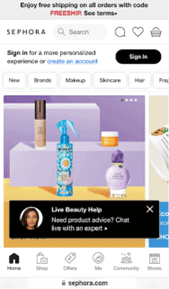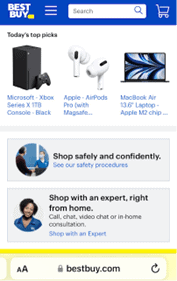3 Reasons Your Brand Needs a Personalization Strategy

There’s little doubt that having a marketing personalization strategy can help turn prospects into customers and increase their engagement with your brand. In fact, companies who don’t communicate with customers in a personalized manner leave themselves vulnerable to brand switching. Here are three reasons your marketing strategy needs to include personalized customer experiences:
- 71% of consumers expect companies to deliver personalized interactions.
- 76% of consumers get frustrated when that doesn’t happen.
- Companies that grow faster drive 40% more of their revenue from personalization than slower-growing competitors.
Personalized marketing can be as simple as using a customer’s first name in an email. However, with the abundance of big data, advancements in automated technologies, artificial intelligence, and predictive marketing, the possibilities for highly targeted, individualized personalization strategies have expanded dramatically. Whether it’s a personalized website experience, individually relevant email messaging, or unique services via mobile app, customers are looking to be engaged in customized and meaningful ways.
What is Personalization?
Personalization is the marketing strategy of creating and delivering individualized content to highly-targeted consumers. Personalization programs are enabled and made scalable by collecting and analyzing omnichannel data with the assistance of automated technology, such as AI and machine learning.
Finding the right talent, technology, and resources to create a targeted personalization strategy is no small feat. It helps to first develop an intimate understanding of the link between your consumers’ core needs and the intrinsic benefits your brand offers to fulfill them. Without that, even the most sophisticated technology can’t guarantee success.
Engaging Consumers as Segments of One
Consumers expect to receive messaging with a high level of personalization, thanks to personalization pioneers like Amazon and Netflix. However, to be truly effective, a personalization strategy needs to deliver a meaningful customer benefit based on their needs and desires, and the point they are at in the customer journey. That understanding of customer needs, particularly on an emotional level, will serve as inspiration for targeted communication messaging, customized products and services, and even individual pricing down to a segment of one. You can then pinpoint when and where in your customer’s experience those needs arise and deliver personalized messaging to demonstrate how your brand is ideally suited to meet them.
Personalization in Action
Here are some companies recognized in the 2022 Retail Personalization Index Top 100 Brands List.
- Loyalty program links to customer retention, offering rewards aligning with age of shopper. (Mature customers get points/discounts, Gen Z gets mobile-only perks/access to events)
- Recommendation engine uses data, predictive analytics, and quizzes to serve up more relevant products. (Buy a curling iron? Maybe you want hairspray too.)
- Sephora sends birthday gifts from premium brands to its Beauty Insider members.

- Use of in-store specialists to answer questions and demonstrate features to make shopping initiated through email or text feel human.
- Online customers are provided with info on what they recently browsed.
- BOPIS – Buy online, pickup in-store; Best Buy was an early adopter of offering shoppers curbside pickup and click-and-collect

- Preference manager gives customers control of when/where they hear from the company
- “Shop the Look” recommendations are provided after shoppers make a purchase. (Need some clothes to go with those new shoes?)
- Emails to proactively alert Creators Club shoppers to rewards

Start by Listening to Consumers
Clearly, executing a marketing personalization strategy holds tremendous promise for all types of organizations. In fact, according to a McKinsey & Company report, “The surge in online interactions since the onset of the pandemic escalated expectations—giving consumers more exposure to the personalization practices of e-commerce leaders and raising the bar for everyone else.” That’s why listening to your customers is the best place to start. Consider gathering feedback throughout your personalization development process. It can help guide you and your teams as you develop meaningful, relevant, individualized ways to communicate with your customers at the most important moments in their customer journey. Isn’t that something we’d all like to experience?
RECOMMENDED FOR YOU
Three Things All Strong Brands Have in Common

